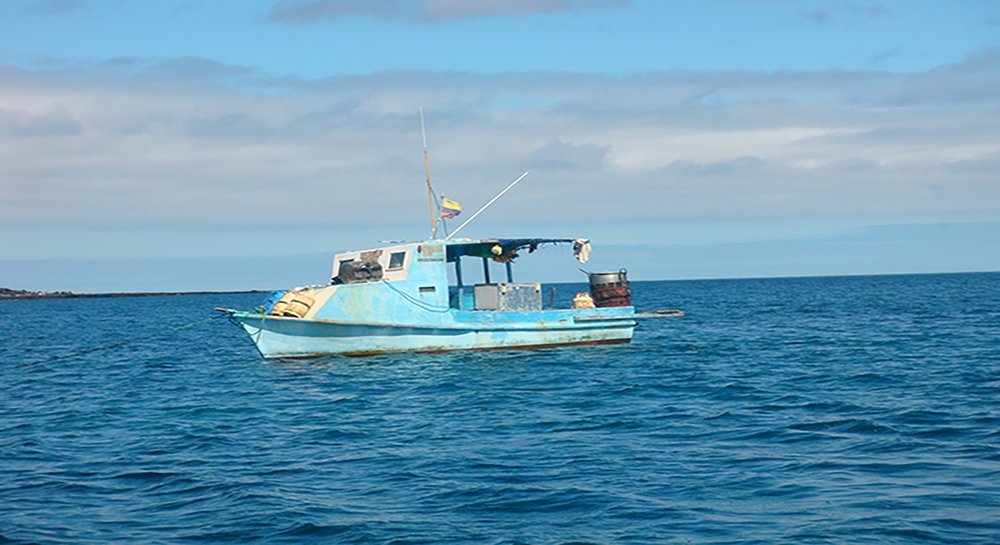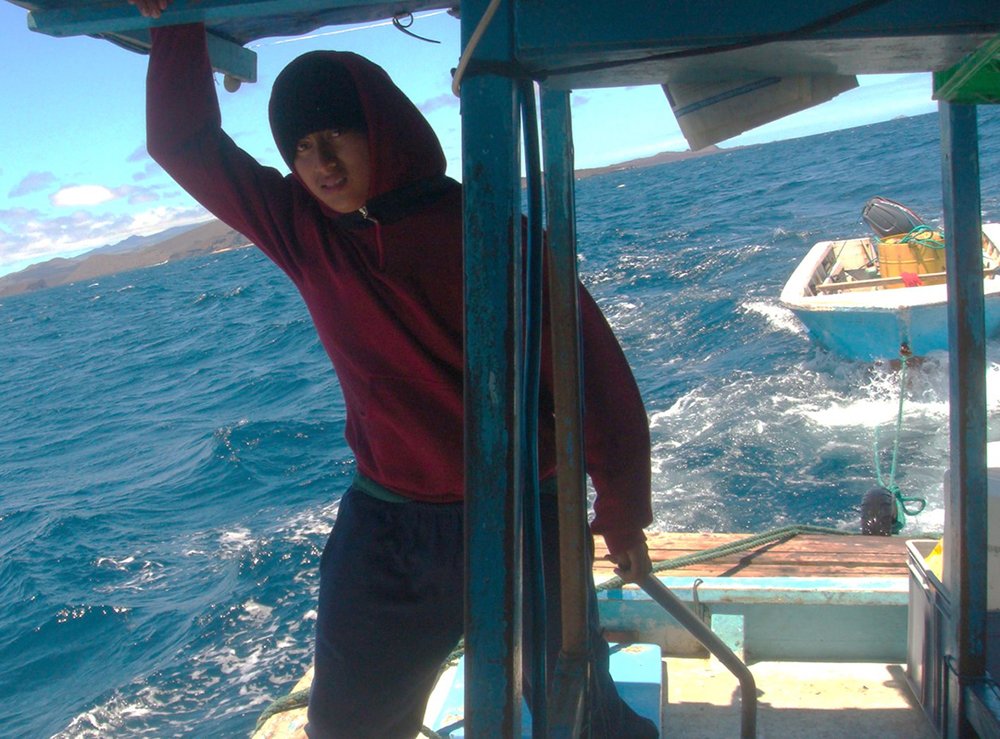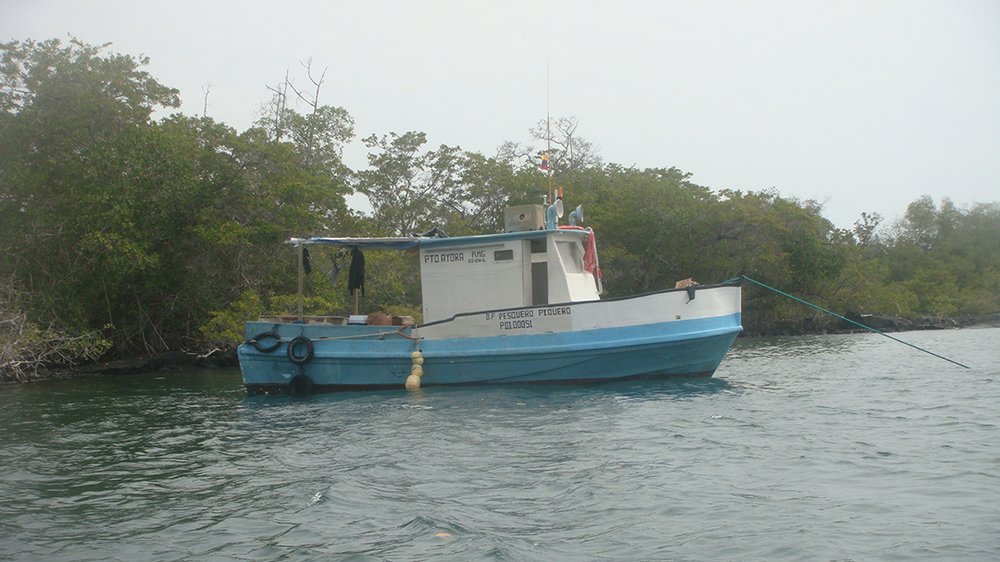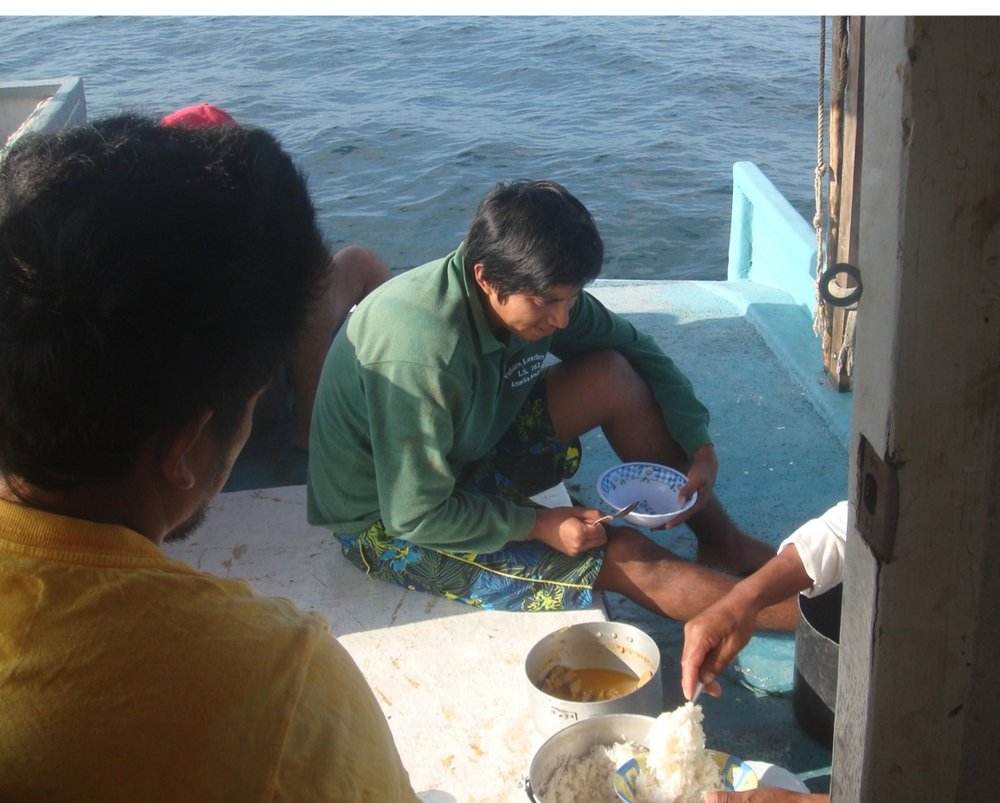
Author: Wilson Rivadeneira
I am pleased to share this blog to tell you what the art of fishing means to my family, my university experience and, my understanding of the importance of responsible management of the marine resources, as it is the livelihood of many “Galapagueñas” families like mine. My intention is to motivate the understanding of the importance of artisanal fishing, not only in Galapagos but anywhere in the world.
As a son of an artisanal fisher from Galapagos, I have been learning about this profession thanks to the teachings of my father, who has been fishing for approximately 30 years ago. This experience was my greatest motivation to study a university career linked to fishing, such as aquaculture.

I remember to be closely related to fishing and to the sea since I was a child, because growing up in Galapagos has allowed me to get to know many places that, undoubtedly, any tourist would want to visit. My father used to return from his fishing trips with a variety of fish, some very rare like batfish and others with intense colors like the king grouper. The lobsters also come to my mind, which before being put into the pot, were walking around the patio of my house.
The first time my dad took me fishing was when I was 14 years old and it was in our boat called Javeline, sarcastically known as the Titanic because of its small size. The first days of my trip were a bit tortuous, as I was not used to sailing and I was dizzy. Thanks to this trip, I was able to visit incredible places such as a small bay with crystalline and turquoise waters on Santiago Island known as "Ladilla" and, I also took my first diving classes with my father in order to learn how to catch lobsters.
During the time of navigation, we slept on bunk beds, which, when I returned to home and lay down on my bed, seemed immense. In fact, I had the perception that all the objects in my room had grown. I fell asleep thinking about my first big adventure with my dad.
Until I finished school, my dad never took me fishing again although I was always helping with related activities such as cleaning fish, loading the ice, fueling, etc. When I finished school, 3 years after my first big adventure, experimental fishing with “modified oceanic deep handline” led by the Galapagos National Park Directorate was underway and my dad allowed me to participate. At the same time, my dad launched a boat that he built himself, called Pesquero Piquero, a little bigger and more comfortable than the Javeline.

In the Pesquero Piquero we traveled to Fernandina Island (the most western island of the archipelago). There the fishing operation consisted of going out about six miles outside the island to set the experimental fishing gear, which consisted of 100 hooks that reached 26 meters in depth and after about 2 to 5 hours, depending on the site and conditions, it was picked up. All the work was manual.
During the 15 days of the trip, I remember that was until the last days of fishing that we caught the big fish (escolar, swordfish and tuna). In these journeys, I enjoyed the incredible starry nights and had the opportunity to see countless marine animals in their natural state, like killer whales, dolphins, mola mola, etc. I also understood that fishing is an activity of much effort and sacrifice, but at the same time, it is very rewarding at the end of the day and that, to live peacefully and happily, very little is needed.
One of these days on the trip, my dad told me "If you stay, this is what awaits you, the fishing is good, but it is better that you continue studying". This is how I managed to enter to the Escuela Superior Politécnica del Litoral to study Aquaculture Engineering and, therefore, also to leave Galapagos. Living in Guayaquil city was a bit interesting; it was another lifestyle. It took me a while to get used to the noise of the cars. At night, I sometimes found it hard to sleep, so I remembered the fishing trips in Fernandina where we always anchored near the cliffs and the sound of the waves had a similarity to the noise of the swaying of the cars on the highway.

During university, there were things that I already knew in practice. For example, in the class of nautical and fishing activities we used the trammel fishing gear. But the class assistant knew all the theory, but had never fished with trammel and, no matter how much they say they know how to use it, it is not as easy as it seems.
On one occasion, on a field trip where we visited a fellow’s shrimp farm, we had to use a plankton net. For this, we had to get into a canoe and use a paddle to move around in the shrimp pool. The first ones who tried to row could not do it because the canoe was very unstable, and the oar was a stick. Fortunately, I learned how to paddle on the loading dock in Galapagos using a stick in my dad's small panga (wood vessel), which you have to climb carefully because it turns; once it even sank because we sat with my cousins on one side, filling up with water overboard. Then, seeing that my fellows could not, I offered to drive the canoe in the shrimp farm to collect the plankton samples with the net. That day I rowed for about two hours around the pool.
On my vacation, I would return to the Galapagos and take that as an opportunity to go on lobster fishing trips. I always heard fishers say that there used to be more lobster, that what you catch in a week, you could catch in a night. Evidently, the populations of spiny lobster and slipper lobster have diminished and not only this species, but there is also the sea cucumber, which because of its life cycle is slow to recover. This caught my attention because as I was studying aquaculture one could do repopulation of these species, but until that time at the university, we had not touched on the subject of the aquaculture of these species.
When I was studying the 7th semester, I had the opportunity to do an internship at the National Center of Aquaculture and Marine Research (CENAIM Spanish acronym) where I learned that there are protocols for the aquaculture of sea cucumbers. This seemed incredible to me since these techniques can be used in an attempt to repopulate the populations in Galapagos, which in turn can be beneficial for fishing. Then, as part of the ESPOL program, the aquaculture students are sent in their last year to CENAIM. In addition to sea cucumbers, I learned a little more about oyster farming for pearl, fish and algae production, although the latter, despite being developed in countries such as Chile, has only been done at an experimental level in Ecuador.
Now every time I go to the beach, I see that there are many species that could be farmed to generate a source of income to fishers that can range from the farming of pearl oysters, seaweed for food and repopulation of species such as sea cucumber and red lobster.
I feel very lucky to have grown up in Galapagos and even more so, that my family is dedicated to artisanal fishing. This is the first job I learned from my father and thanks to him, I have been able to visit many places and live incredible adventures; at the same time, it allowed me to understand the importance of marine resources for our community. For me, fishing represents a lifestyle in which the most important thing is to be well-fed and have comfortable clothes, although it is an activity that requires a lot of effort, it also has very fun and interesting experiences. Now, as a volunteer with the Charles Darwin Foundation's Interdisciplinary Fisheries Project, I have come to understand those marine ecosystems are influenced by many environmental variables and that they are part of a larger environmental and human system, as complex as artisanal fisheries.
-ENDS-





